Article
Crieff, Perthshire 3: The Scone Palace, Rob Roy, and William Wallace
Author(s):
An easy drive through the Scottish Highlands takes visitors on a tour of Scotland's unique history, from the castles of Scottish nobles to the battlefields of William Wallace, aka "Braveheart."
Perth, the largest city in Perthshire, lies on the River Tay 120 miles from the Highland city of Inverness and about 45 miles from Edinburgh, the country’s capital. It lies an easy 17 miles east of Crieff. Perth is an easy stepping stone to the Highland North, the cities of Dundee and Aberdeen to the East and, nearby, 4 miles north Scone Palace, the location where the kings of Scotland were crowned over the centuries.
I have visited this historic palace many times in the last 60 years and seen it change from an institution that was visitor- and camera-friendly to a place that at times can be swamped by visitors. Now the Palace struts as a commercial enterprise like the peacocks that throng its grounds denying camera permission to its visitors. I have my own interior shots from previous visits when the rules were different so am unaffected but am disappointed to see this grudging attitude amongst some other museums in what was once my own generous country.
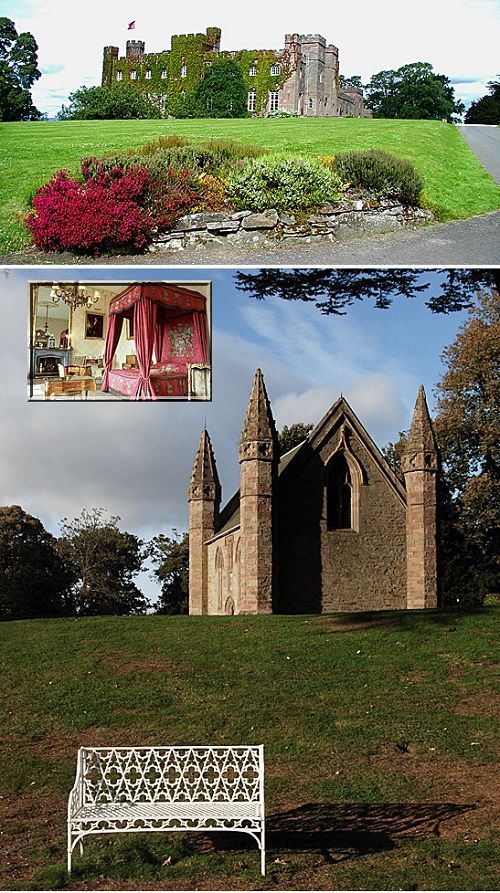
A king’s Four Poster bed and Scone Palace’s moothill or boothill. Scottish nobles brought in soil from their clan lands in their shoes as a tradition in order to stand on their own property while accepting the king as their monarch. Chapel of palace in background.
Blair Castle, an easy 35 mile drive north up the A9 from Scone Palace, is the longest by one family- owned castle in Scottish history. It goes back 700 years and during that time endured the whims of elitist owners and architects who at different times transformed the castle from a medieval keep to a Georgian home -- and during the Victorian period, when Scottish Baronial architecture came back in favor, it had its battlements restored.

Blair Castle and a young piper welcomes visitors. Part of the armor of a Scottish hero, Graham of Claverhouse (“Bonnie Dundee”), showing the musket shots that fatally pierced it in the Battle of Killicrankie. A tourist studies a Scottish crown.
When you are up north in Pitlochry you will find plenty of hotels because this surely is tourist country. Spend some time with a guide book or online. There is a lot to see.
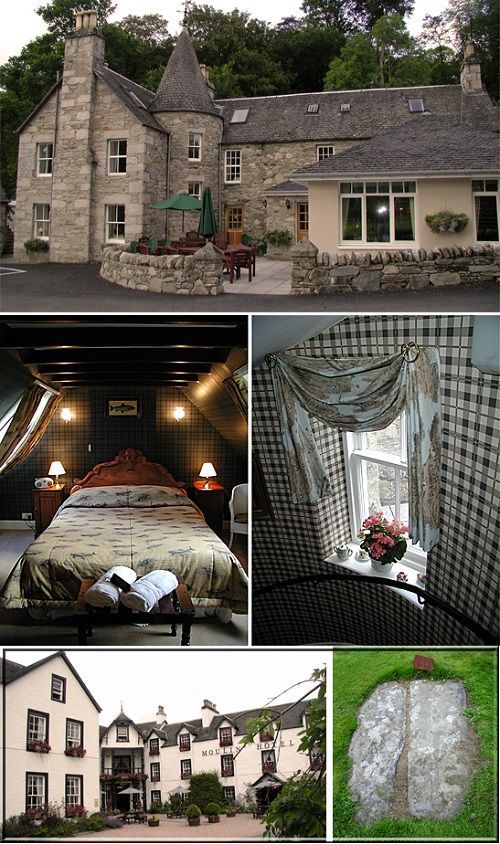
The East Haugh House in Pitlochry is one of our favorites: easy parking, nice people who are attentive, and knowledgeable hosts and great food. It gets rave reviews at hotel booking sites including TripAdvisor. We like the nearby Moulin Hotel also. My mother was born in the village of Moulin in 1902 and it hasn’t changed much in all those years. Moulin still has a Crusader’s grave in the village cemetery (bottom right image).
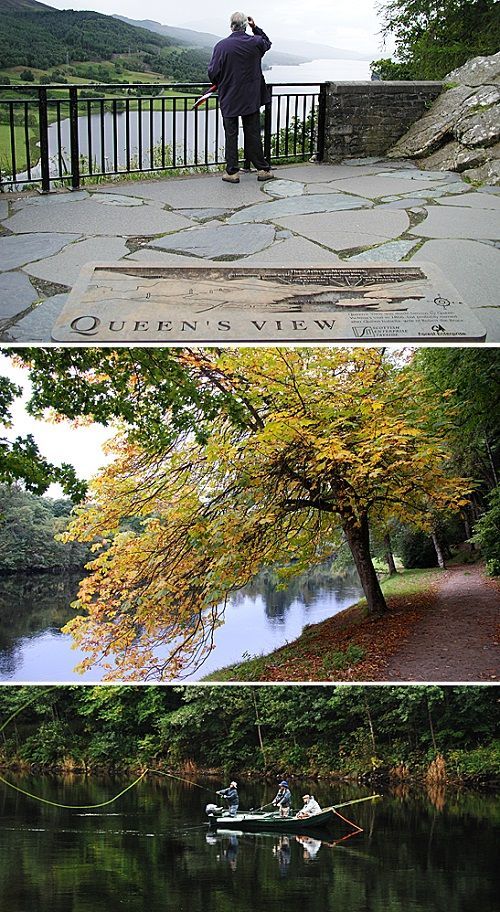
A few miles from Pitlochry stands the Queen’s View giving visitors a gorgeous panorama over the River Tummel and to the west beyond, Loch Tummel itself. Although Queen Victoria stood here in 1866, this spot (that in those days was often called Europe’s Last Frontier) was probably named for a previous Scottish Queen.
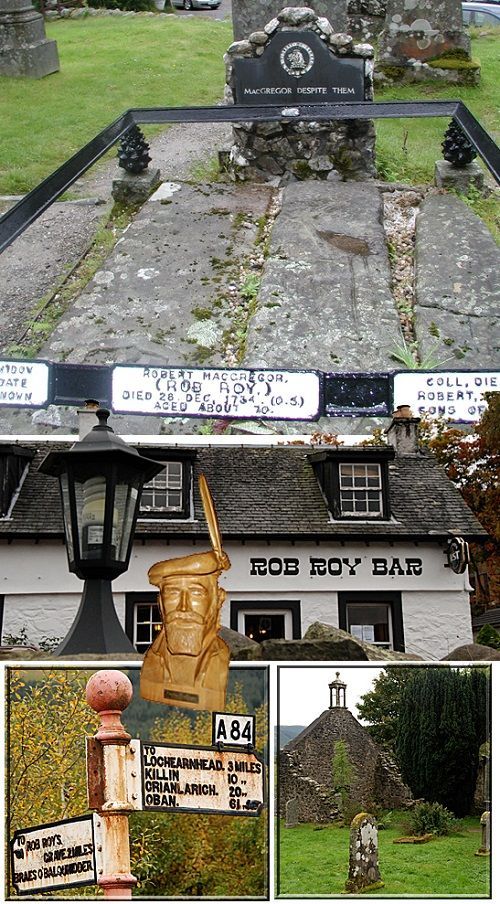
A delightful drive of 50 miles to the southwest brings you to another village, Balquhidder, this one with a more famous grave, that of Rob Roy, a Scottish folk hero although some would say a rogue not unlike Robin Hood. Rob Roy’s Grave lies beside the Parish church that is, itself, worth a look. Most Scots like the character who was made famous by both a book by Sir Walter Scott around 1830 and a movie with Liam Neeson in 1995. Crieff, is mentioned several times in the movie as the market town to buy and sell cattle.
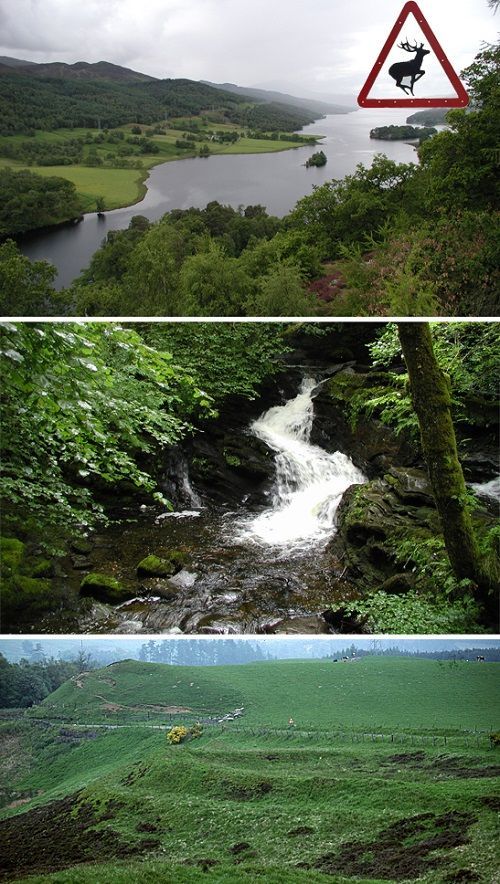
Another example of the Queen’s View, a burn (small stream) near Rob Roy’s grave and the battlements of a Roman Camp in the Sma’ Glen a few miles north of Crieff.

On the way back from Balquhidder, you might want to call in on Jonathan Sainsbury, a local wildlife artist in Comrie. 6 miles west of Crieff. He is accustomed to visitors dropping in on him as he works. His studio is opposite the street from the church. We have found him in both locations but you may want to call him first at 01764 679011 to verify he is in his studio.
Asked about art, Sainsbury has this to say:
• Don’t paint for the market. It is your way of expressing yourself.
• Don’t do it for the money. It takes time to become established.
• As an artist be aware how lucky you are. You get up in the morning and can do anything you want.
We tell Sainsbury we wonder if, perhaps, painting makes artists selfish. He readily agrees. “That’s a given,” he says. “I believe artists have to have an obsessive gene! I used to feel that art is all I’ll leave that I can be judged by, but as I get older I’m not so bothered by that concept.”
Now you leave Comrie behind. You’ve been busy on Scottish roads and driving on the ”wrong” side of the road so if you are tired you may want another night in Crieff or maybe you are up to heading south, first to Stirling for its castle or, more likely, its Wallace Monument then on to Edinburgh.
Mel Gibson’s exciting movie Braveheart tried to explain it but I never really understood the story of William Wallace, whose forces achieved a magnificent victory over the English at the Battle of Stirling Bridge in 1297. It was a glorious triumph but he was a free man and not a Scottish nobleman (and in fact was betrayed later by such a noble). Nevertheless after he was hanged, drawn, and quartered, his memory kept the English at bay for all of 20 or so years until Bruce defeated them in 1314 at the Battle of Bannockburn. After that it was downhill all the way: Flodden in 1513 wiped out 10,000 Scottish youth so much that a contemporary song lamented the Flowers o’ the Forest “are a’ wede away.” (The Flowers of Youth have become weeds.”) And the Battle of Culloden in 1746 was the final straw; it annihilated the Catholic Jacobite army and finally and absolutely destroyed Scotland’s Highland tradition.
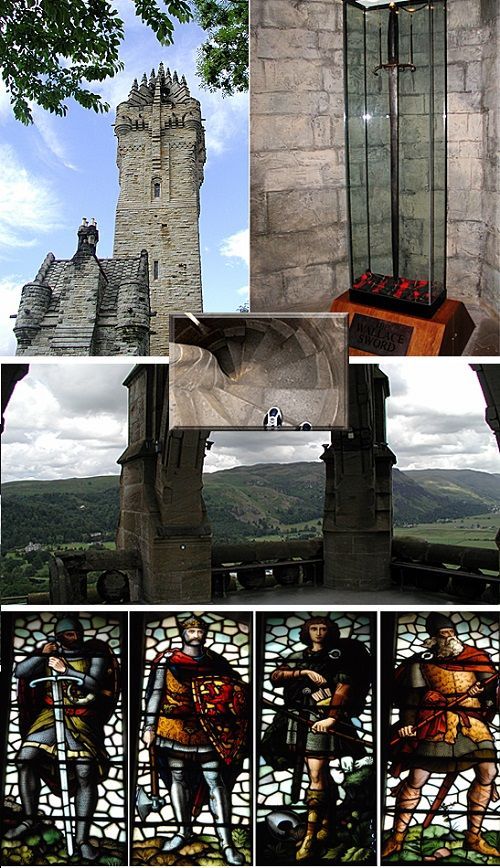
Wallace‘s battle was in 1297. Scotland finally got round to completing a monument to him in 1869. It’s 220 feet high with 246 steps. Treading them is a stress test. The sword is genuine; it has been in the possession of the same family for 700 years! The stained glass windows are now considered priceless.
On the Motorway M9 Edinburgh is a mere 41 miles south then east from the Wallace Monument. It’s a busy highway; you will think you are back in the United States. We will talk about Edinburgh in more detail in a few months but perhaps we can mention a couple of ideas for Scotland’s capital city.
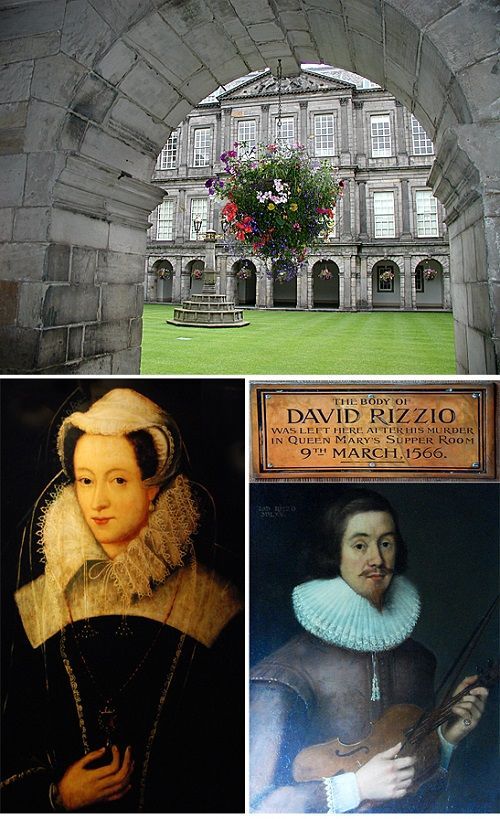
The palace for Scottish royalty was Holyrood House. Its most celebrated monarch who lived there was the tragic Catholic Mary Queen of Scots. She was executed by her Protestant cousin Queen Elizabeth in 1587 for alleged treason. The palace is open to the public including the Queen’s private chambers where her jealous husband Lord Darnley murdered her private and probably blameless secretary for undue influence.
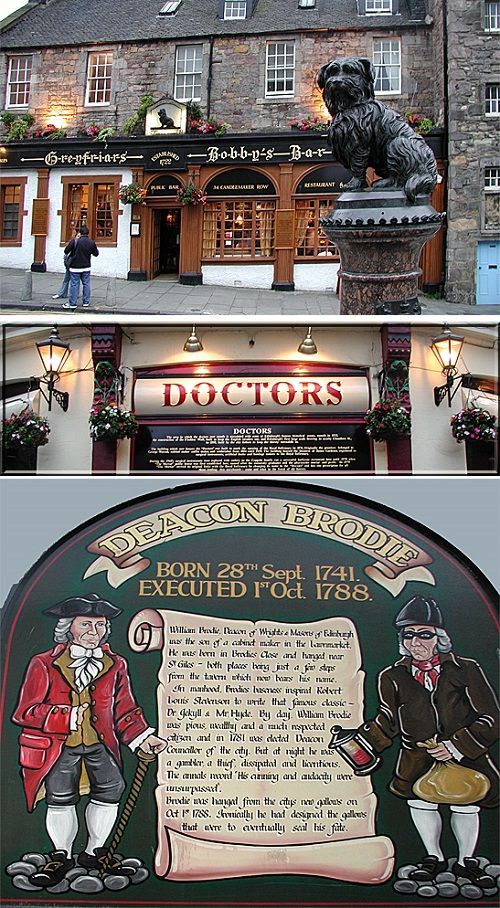
Less bloodthirsty are some of the other tourist attractions just off the royal Mile (that connects Holyrood with the Castle). Greyfriars’ Bobby’s Bar pays tribute to a great-hearted Cairn (Skye) Terrier who guarded John Gray’s his master’s grave in the nearby cemetery for 14 years from 1858. They made a movie about Bobby and he has his own website. Another pub is more personal for physicians, Doctors. Check it out before you go as it had more of a buzz when the Royal Infirmary was across the road and before the medical school moved it was just round the corner, a mural reminds visitors that Deacon Brodie, who was executed in 1788, was the source of Robert Louis Stevenson’s novel Dr, Jekyll and Mr. Hyde.
Photography by the author
The Andersons, who live in San Diego, are the resident travel & cruise columnists for Physician's Money Digest. Nancy is a former nursing educator, Eric a retired MD. The one-time president of the New Hampshire Academy of Family Physicians. Eric is the only physician in the Society of American Travel Writers. He has also written 5 books, the last called The Man Who Cried Orange: Stories from a Doctor's Life.




